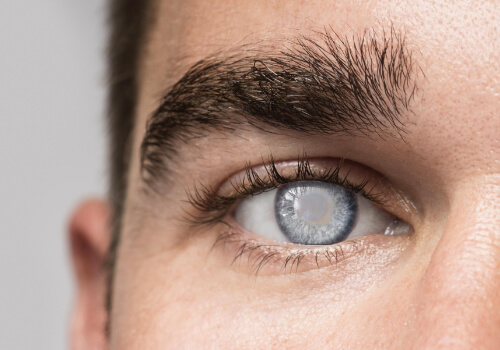One of the most common reasons for vision loss across the world is CATARACT, also known as MOTIABIND (मोतियाबिंद).
Cataract develops at a slow pace and takes years to reveal its most common symptom – (cloudy or blurry vision). It can be easily treated by replacing the cloudy lens with clear, artificial lenses. However, there are many myths about cataract, its symptoms, and treatment options that need to be busted.
Let’s take a look at 6 common myths about cataract–
- Only the aged are affected by cataract
It’s true that cataract is a common eye-related problem in old age and most cataract patients are above 50 years. However, one should know that it can occur at any time. For instance, there are cases where cataracts are congenital, hereditary or caused due to comorbidities such as diabetes, hypertension, nutritional deficiencies or also due to steroid intake, stress or eye inflammation.
- Yoga, diet or eye exercises can prevent cataract
One of the most popular misconceptions about cataract is that it can be cured without medical assistance. Cataracts develop through a natural aging process and any lifestyle change or eye drops cannot dissolve or prevent it. The only defined formula is through cataract surgery. Although, taking precautions such as wearing sunglasses to block UV rays, adopting a healthy lifestyle can decelerate its progression.
- Cataract surgery is required only when it ripens
Cataract surgery works best, when it is done on softer cataracts rather than the matured or ripened ones which are also harder. Hence, you must not delay the surgery when you start showing symptoms or visual problems.
- Cataract can recur after surgery
Cataract is identified by cloudiness of clear eye lenses – when transparent proteins form a compact mass after losing their elasticity. Therefore, a cataract surgery replaces the cloudy lenses with new artificial ones which thereby assures that cataracts do not grow back. Although, in some cases the natural capsule left behind becomes cloudy which can be permanently treated by a quick laser procedure (i.e. ND YAG Laser Capsulotomy) in OPD.
- Cataract surgery is of high-risk and recovery takes long
One of the safest procedures in the medical field is a cataract surgery because it is pain-free and a person can resume daily activities in just a day or two. The healing does not take much time as the doctor refrains from using injections, pads and bandages except giving local anesthetic eye drops during surgery.
- Cataract can spread from one eye to another
If you have cataract in one eye, you may develop it in the other eye at roughly the same time. Cataracts do not spread from one eye to another as there is no mechanism to allow them to spread since they do not grow on the eyes, but change the eye’s natural focusing lens. Hence, cataracts develop independently of each other and are not contagious.
Cataracts can be treated easily and safely with the right kind of guidance by doctors that have answers to all your doubts. It is important to schedule yearly appointments as you age and take care of your health.
At MM Chokshi Eye Hospital, we have a team of eye doctors and eye surgeons who are well-equipped and experienced to guide you with eye-related problems.
Look at the world with more clarity. Make an Appointment today.


Very Informative article ..
Do you wish to be served with more blogs like this? Check out our link below !
More Blogs
OR You can also visit our case studies wrote by our Doctors itself !
Case Studies
Insightful and interesting article!
We’re glad to serve you this blog, for more interesting topics, check out our other blogs !
More Blogs
Informative article👏🏻
We’re glad you found it informative, do check out our other blogs as well !
More Blogs